Service by appointment only
Call 020 7736 0046
Call 020 7736 0046 To book
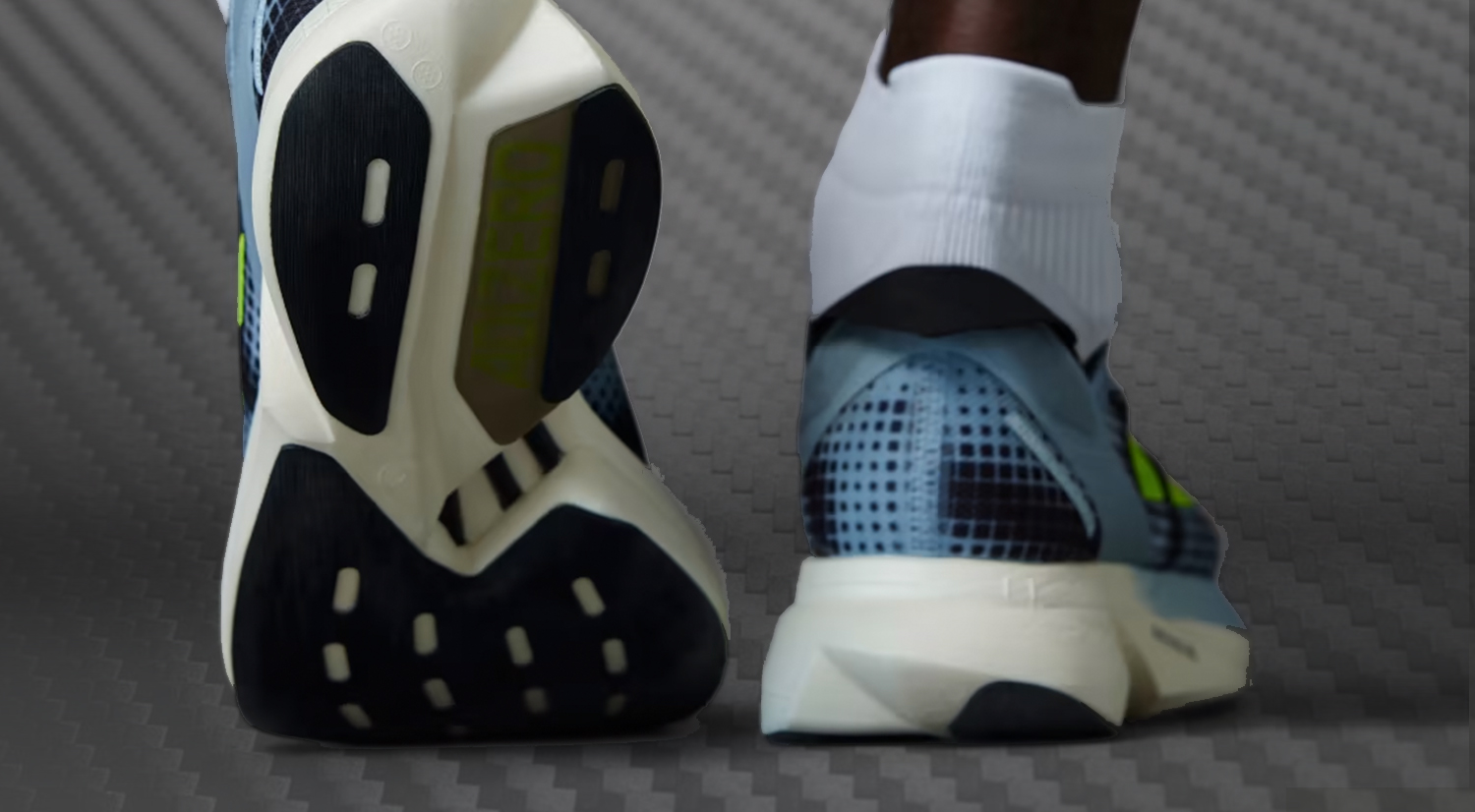
With world marathon records in both mens and womens races being smashed out of the park in the past couple of weeks, it’s an exciting time in running footwear.
It’s clear that changes in shoe technology are making a big contribution to world records being obliterated. Discussing the potential of a sub-2 hour marathon record on the Marathon Talk podcast, US marathon record holder Deena Kastor said:
“We’re just one shoe model away!”
But how much do we really know about carbon plates, foam soles, and interactions between them? And, can slower runners also benefit from new shoe technologies?
How carbon plates work
It is hard to keep up with the current advancement of carbon plates, with research lapsing behind current industry trends and developments. Also, running manufacturers are keeping their newest running tech heavily guarded.
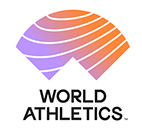
Seeking to address balance within sport, World Athletics recently introduced new athletic shoe regulations. For road shoes, these new rules include:
- Sole no thicker than 40mm,
- Contain no more than one rigid structure (such as a carbon fibre plate).
However, you’ll only really benefit from carbon-plated running shoes if you are (at least) achieving sub 3 hour marathons. It’s all about performance and speed to benefit from the economy influences. Research has shown that runners with a pace over 14 km/hour see the biggest improvements. Profeet’s run and footwear technician Tom explains:
“It’s about the timing and the synchronicity. The high energy return from the super soft responsive foam is transferred onto the carbon-plate. It rolls you through, via the rocker-shaped sole, and that propels you forward.”
So, is the foam more important?
There is research that shows that it’s how the midsole foam interplays with the carbon plate that makes a big difference in running economy. However, there are many foams, with different densities and make-ups – that are still evolving.
Nike Zoom X (PEBAX) foam, used famously in Nike Vaporfly, was the first ‘super foam’ – boasting a superior energy return compared with other foams in scientific tests. Zoom X foam was developed to form part of the Alphafly shoes worn by Kenyan runner, Kiptum, who recently achieved a new world record time in Chicago.
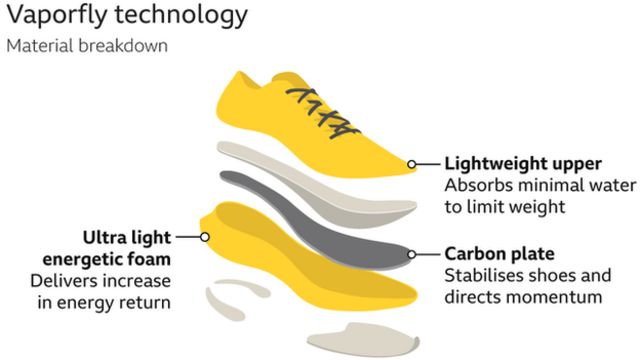
Meanwhile, Adidas was developing a more durable sole foam. Recently, their new Adizero Adios Pro Evo 1 projected Ethiopia’s Tigst Assefa into the lead at the recent Berlin Marathon. She took a massive 2 minutes off the women’s world marathon record! These super light shoes combine Lightstrike foam with carbon-infused rods – as well as a forefoot rocker.
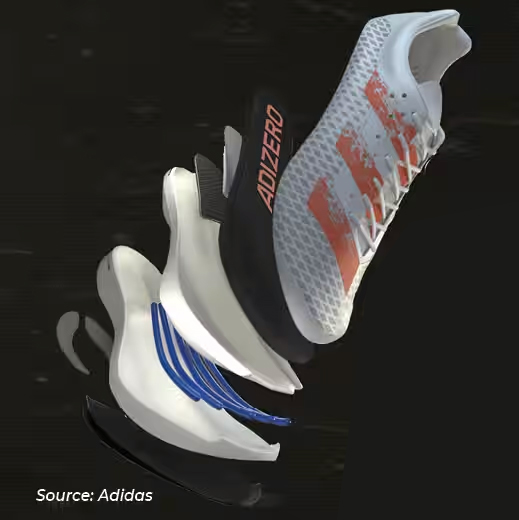



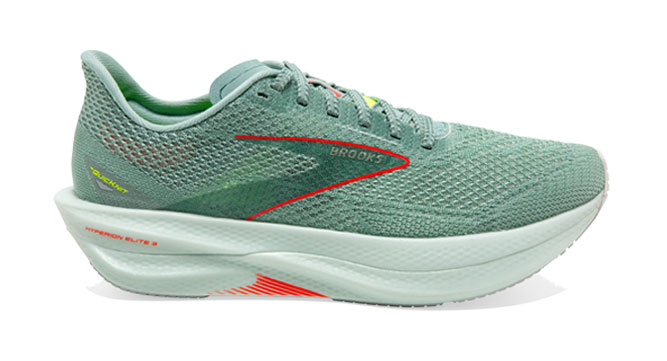
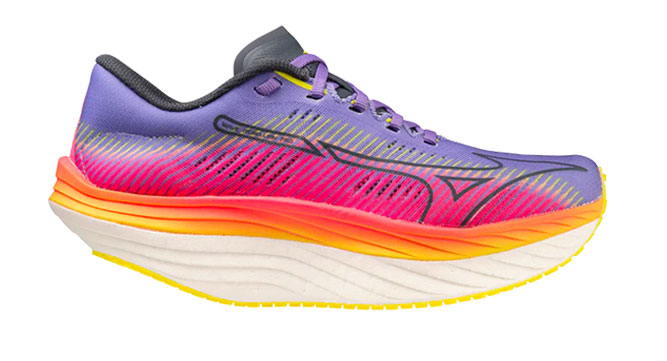
Sole geometry
Nike and Adidas aren’t the only ones developing their foam soles. Saucony’s new PWRRUN foam used in its Endorphin Pro 3 is showing potential. Also combined with a carbon plate and tailored sole geometry, it has all the elements that can propel you forward to a race-day PB. However, Saucony’s Endorphin Speed shoes use similar technology, but are more suitable for daily training.
Certainly, the geometry of the shoes also plays a big part – especially those with a rockered sole for triggering forward momentum. But there are many factors that are contributing to tumbling records, including improved training techniques and injury prevention.
Shoes that help you achieve your goals
There are several factors to consider when choosing the right running footwear. Shoes that compliment your running style, take into account history of injury, and that are comfortable, should outweigh shoes with economy improvements.
We carry out a full biomechanical assessment to ensure that we address any issues that are affecting your running efficiency. We will talk about your typical running training patterns as well as upcoming goals. We can provide a range of options for you to try, including shoes that can help you train in comfort on long distances, to lighter shoes with new technologies that can help improve your race-day performance.
Call 020 7736 0046 to book your one-to-one appointment with one of our qualified Profeet technicians.
OUR SERVICE IS BY APPOINTMENT ONLY
Profeet’s services are by appointment only, please call or book online in advance
